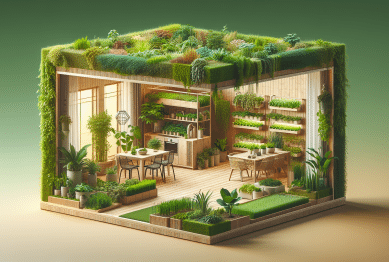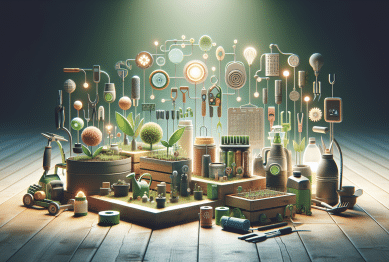Indoor plants are more than just decorative elements—they improve air quality, reduce stress, and create a calming environment in your home. However, keeping plants healthy throughout the year requires consistent care, attention to seasonal changes, and understanding each plant’s specific needs. Whether you are a beginner or an experienced plant parent, these top tips for maintaining indoor plants year-round will help your greenery thrive in every season.

Understand Your Plant’s Specific Needs
Every indoor plant has unique requirements, including light, water, soil, and temperature. Before bringing a plant home, research its natural habitat and care preferences. Some plants, like succulents and cacti, thrive in bright, direct light and require minimal watering. Others, such as ferns and peace lilies, prefer indirect sunlight and consistently moist soil. Understanding these needs prevents common mistakes like overwatering or placing plants in unsuitable light conditions.
Choose the Right Location
Location is critical for the long-term health of your indoor plants. Position plants near windows that provide the appropriate amount of sunlight for their species. South-facing windows are ideal for sun-loving plants, while north-facing windows suit shade-tolerant varieties. Avoid placing plants too close to heating or cooling vents, as sudden temperature changes can stress the plants. Rotating plants periodically ensures all sides receive sufficient light and promotes even growth.
Establish a Consistent Watering Routine
Watering is one of the most crucial aspects of plant care. Overwatering is a leading cause of indoor plant death, while underwatering can cause leaves to dry and wilt. The best approach is to understand each plant’s water requirements and create a consistent routine. Check the soil moisture before watering, and ensure pots have proper drainage to prevent root rot. During winter, many plants enter a dormant phase and require less frequent watering, so adjust your routine accordingly.
Monitor Humidity Levels
Indoor humidity can fluctuate significantly, especially during winter when heating systems dry out the air. Many tropical plants, such as orchids and ferns, thrive in higher humidity. To maintain optimal moisture levels, use a humidifier, place plants on pebble trays with water, or group plants together to create a microenvironment. Monitoring humidity helps prevent issues like brown leaf tips and slow growth.
Fertilize According to Growth Cycles
Indoor plants require nutrients to grow, but over-fertilization can harm them. Feed plants according to their growth cycles, typically more frequently during spring and summer when they actively grow, and reduce fertilization during fall and winter. Use a balanced, water-soluble fertilizer and follow the manufacturer’s instructions. Regular fertilization supports vibrant foliage, strong roots, and healthy blooms.
Prune and Remove Dead Growth
Regular pruning is essential for maintaining plant health. Remove dead or yellowing leaves to prevent disease and encourage new growth. Pruning also helps control the shape and size of plants, keeping them manageable and aesthetically pleasing. For flowering plants, deadhead spent blooms to promote continuous flowering. Consistent maintenance ensures that plants remain vibrant year-round.
Repot When Necessary
Over time, plants can outgrow their pots, leading to restricted root growth and nutrient depletion. Check for signs such as roots growing out of drainage holes or soil drying too quickly. Repot plants into slightly larger containers with fresh potting mix to support healthy growth. Repotting is best done in spring, when plants are entering their active growth phase, allowing them to adjust quickly to the new environment.
Protect Plants from Pests
Indoor plants are not immune to pests such as spider mites, aphids, or mealybugs. Regularly inspect leaves and stems for signs of infestation, including discolored spots, sticky residue, or webbing. Natural treatments, such as neem oil, insecticidal soap, or wiping leaves with a damp cloth, can help control pests without harmful chemicals. Early detection and treatment prevent infestations from spreading and damaging your plants.
Adjust Care for Seasonal Changes
Seasonal changes affect light, temperature, and humidity, so adjusting plant care throughout the year is essential. During winter, plants may require less water and lower fertilizer amounts, while summer growth often necessitates increased hydration and nutrient support. Observing your plants’ behavior, such as drooping or slowed growth, provides clues on when to adapt your care routine.
Use Proper Lighting Solutions
Not all indoor spaces provide sufficient natural light. For rooms with low sunlight, consider using grow lights to supplement your plants’ needs. LED grow lights are energy-efficient and can provide the spectrum of light that plants need for photosynthesis. Placing lights 12 to 18 inches above plants for 10-12 hours per day can mimic natural sunlight and promote healthy growth.
Rotate Plants for Even Growth
Plants naturally grow toward light sources, which can lead to uneven or lopsided growth. Rotate your plants periodically to ensure all sides receive adequate light. This practice encourages symmetrical growth, maintains structural balance, and helps plants develop evenly, resulting in healthier and more attractive foliage.
Maintain Cleanliness Around Plants
Dust and debris on leaves can reduce photosynthesis and attract pests. Wipe leaves with a damp cloth or rinse plants in the sink or shower periodically to remove accumulated dust. Keeping the soil surface clean by removing fallen leaves or debris also prevents mold and pests. A clean environment promotes optimal plant health and a visually appealing display.
Keep a Care Journal
Tracking your plants’ watering, fertilization, pruning, and environmental changes can be immensely helpful. A care journal allows you to identify patterns, track growth progress, and anticipate seasonal adjustments. This organized approach reduces guesswork and ensures your plants thrive year-round.
Final Thoughts
Maintaining indoor plants year-round requires attention, consistency, and adaptation to seasonal changes. By understanding each plant’s needs, establishing routines, monitoring environmental factors, and adjusting care throughout the year, you can enjoy healthy, vibrant plants that enhance your living space. Following these top tips for maintaining indoor plants year-round ensures that your greenery remains a source of beauty, relaxation, and well-being no matter the season.
References
The Spruce. (2025). How to Care for Indoor Plants. Retrieved from https://www.thespruce.com/caring-for-indoor-plants-1902772
Better Homes & Gardens. (2025). Indoor Plant Care Tips for Every Season. Retrieved from https://www.bhg.com/gardening/houseplants/care/
House Beautiful. (2025). How to Keep Your Indoor Plants Healthy All Year. Retrieved from https://www.housebeautiful.com/lifestyle/gardening/a30267003/indoor-plant-care-tips/









